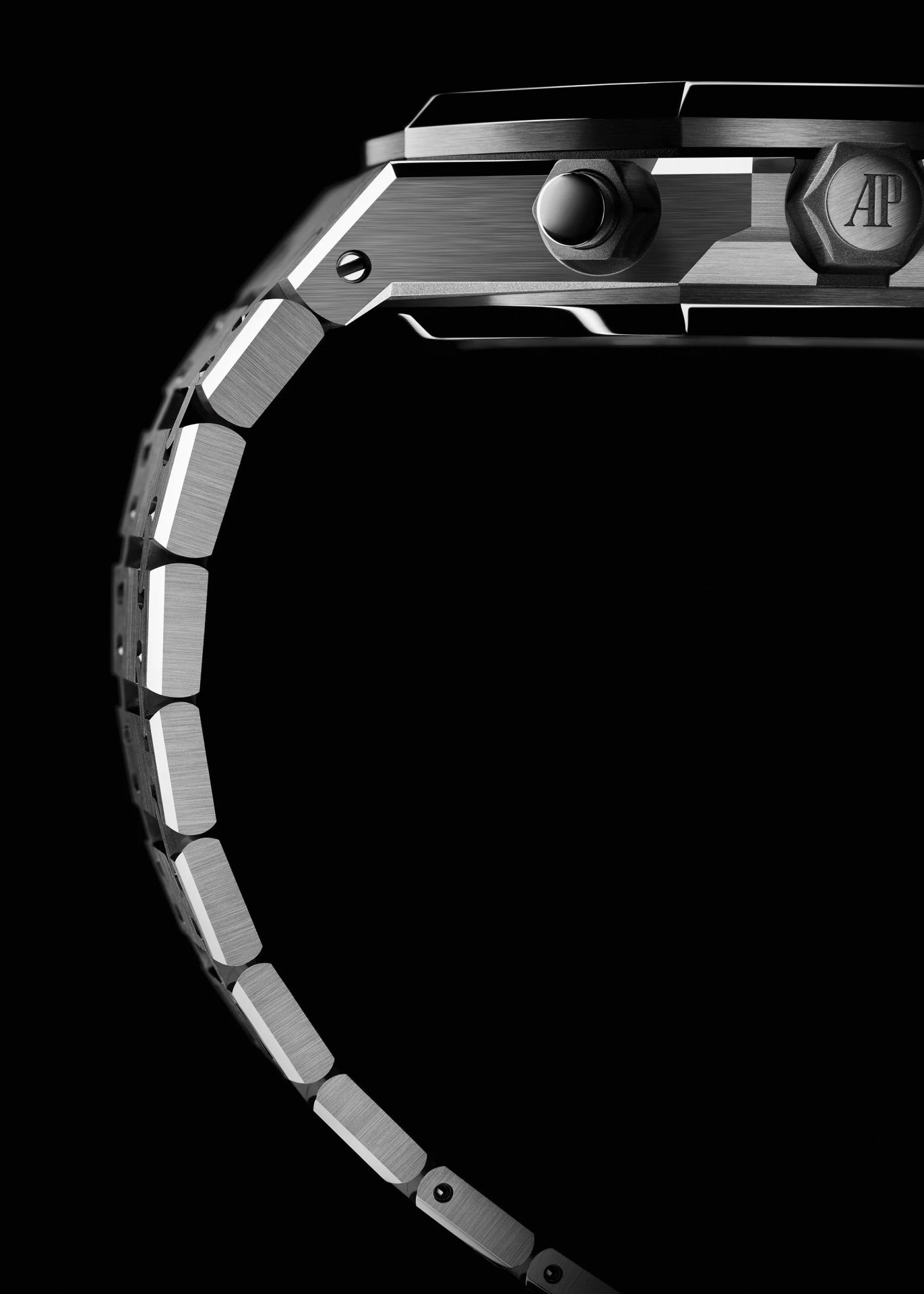Fifty is a big milestone. It’s been that many years since Audemars Piguet introduced the Royal Oak in 1972 and unleashed a new concept of wristwatch on the world: that of the lifestyle-oriented luxury sport watch. Today, the watch and the genre it created are hotter than ever, and to celebrate its birthday the brand is announcing the next generation of Royal Oak — but how do you reinvent an icon?
Although Audmars Piguet isn’t known to be totally risk averse, it would be folly to mess too much with a good thing. The brand needed to respect Gerald Genta‘s original design, but a major anniversary offers a chance for a refresh and to integrate tweaks and upgrades. This is exactly what they’ve done, and although at first glance it feels like a familiar Royal Oak, the differences are indeed many. Here’s what you need to know:
The Royal Oak is slimmer and more ergonomic
The core collection is getting new 37mm Selfwinding models, as well as 38mm and 41mm chronographs. They’re going to be slimmer with a range of elements to improve ergonomics — the Royal Oak already known to be an exceptionally comfortable watch. Thanks to a new movement (see below) and other elements such as a caseback redesign, it’ll now sit even better on the wrist. As previously introduced on some precious metal watches, the famous steel bracelet is now even thinner (and therefore lighter).


The Royal Oak gets new automatic movements
The most substantial update is what’s inside the new automatic Royal Oaks: the Selfwinding and Jumbo Ultra Thin collections both get new, thinner movements. The 37mm Selfwinding Royal Oaks are powered by the brand’s in-house 5900 movement that now operates at 4Hz (instead of 3Hz) and allows the case to measure 8.9mm thick. That’s only 0.8mm thicker than the Jumbo Ultra Thin, which also gets a new movement called the 7121 boasting a longer power reserve of 55 hours. Not all of the new watches have display casebacks, but for those that do you’ll be able to see a special “50 years” decorated rotor for the anniversary.
Little tweaks add up to an aesthetic refresh
If you know the Royal Oak well you might be able to spot some of the differences right away. The signature shapes and design elements are all there, but elements like the case’s polished bevels have been enlarged to catch even more light. It should also help the watch appear slimmer. In addition, you’ll find an applied “Audemars Piguet” logo instead of the “AP” logo and printed wordmark of past collections. These changes are subtle but help distinguish the new generation from the existing models.
[composite mediaId=’56f82001-a8c6-46cb-bae2-260b1f9d3b86′][/composite]


